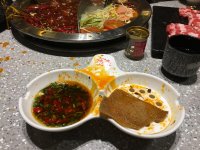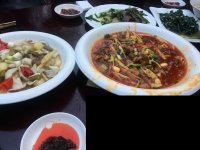Hi all, this is all subjective I’d love to find studies to validate or disprove my observations but here goes...
I’ve done a lot of world travelling and travelled to China 5x already. One of my subjective observations of Chinese in China vs other people groups is the extreme prevalence of lipofuscin (liver spots) that I see on the faces of just about every adult from 30s onwards. You may not see it in some women due to make up and concealer but it’s almost without exception.
In contrast I saw very little lipofuscin in parts of the Middle East where the sun beats down on people and they are often tanned or sunburned. These people typically ate red meats and cooked with butter, ghee, or tallow though now they’ve switched to cheaper vegetables oils in part to globalism. I’ve now see a surge in degenerative diseases are on the rise amongst adults.
Prof Fed Kumerrow also has a great complexion at age 100+ having avoided PUFAs and fried foods.
I can’t help but attribute the lipofuscin in Chinese to excessive intake of PUFA. They liberally use seed and vegetable oil and fry their food in it. Their food is really greasy you can’t avoid the PUFA, for hot pot they literally dip their food in sesame seed oil before consuming. To top it off they consume a lot of fish, pork, and chicken meats.
Are there any studies on the prevalence of PUFA related degenerative diseases amongst Chinese? How about lipofuscin as well? When I inquire about their seed oil consumption they seem to also have bought in to the health claims of PUFA oils being good for heart health. They also say that they don’t have a prevalence for allergies, eczema, and other ailments that westerners have, any studies on this?
I’m also curious how other Asian groups fare such as Filipinos who I assume coconut oils almost exclusively. I have never been to the Philippines so I can’t compare though Filipinos I’ve met have much better complexion in spite of their sun exposure.
I’ve done a lot of world travelling and travelled to China 5x already. One of my subjective observations of Chinese in China vs other people groups is the extreme prevalence of lipofuscin (liver spots) that I see on the faces of just about every adult from 30s onwards. You may not see it in some women due to make up and concealer but it’s almost without exception.
In contrast I saw very little lipofuscin in parts of the Middle East where the sun beats down on people and they are often tanned or sunburned. These people typically ate red meats and cooked with butter, ghee, or tallow though now they’ve switched to cheaper vegetables oils in part to globalism. I’ve now see a surge in degenerative diseases are on the rise amongst adults.
Prof Fed Kumerrow also has a great complexion at age 100+ having avoided PUFAs and fried foods.
I can’t help but attribute the lipofuscin in Chinese to excessive intake of PUFA. They liberally use seed and vegetable oil and fry their food in it. Their food is really greasy you can’t avoid the PUFA, for hot pot they literally dip their food in sesame seed oil before consuming. To top it off they consume a lot of fish, pork, and chicken meats.
Are there any studies on the prevalence of PUFA related degenerative diseases amongst Chinese? How about lipofuscin as well? When I inquire about their seed oil consumption they seem to also have bought in to the health claims of PUFA oils being good for heart health. They also say that they don’t have a prevalence for allergies, eczema, and other ailments that westerners have, any studies on this?
I’m also curious how other Asian groups fare such as Filipinos who I assume coconut oils almost exclusively. I have never been to the Philippines so I can’t compare though Filipinos I’ve met have much better complexion in spite of their sun exposure.


